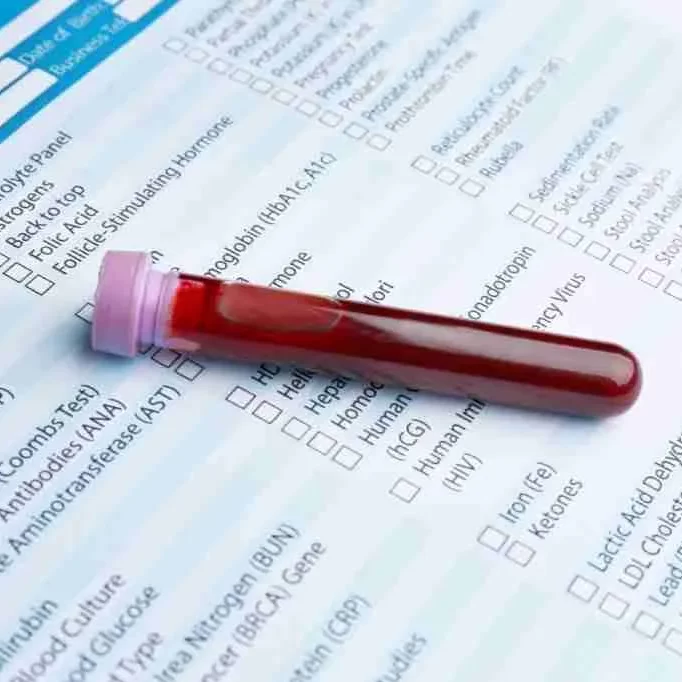Every Saturday, Maddie and I intern at Chamblee Family Medical Clinic, where we take patients’ vitals and prepare blood and urine samples for lab processing.
Since I started this position ten months ago, I’ve noticed that Dr. Nguyen usually orders the same lab tests for his patients. In this article, I explain the most common diagnostic tests so you can better understand how to improve your health.
Complete Blood Count (CBC)1
The CBC test analyzes the amount of three things found in your blood: red blood cells, white blood cells, and platelets.
Red blood cells carry oxygen to your muscles and vital organs. Symptoms of a low RBC, also known as anemia, include fatigue, dizziness, and heart palpitations.
White blood cells are an important part of your immune system and help fight infection. Having a low WBC, or leukopenia, could mean you have an autoimmune disease. An otherwise small infection could be life-threatening to those with leukopenia.
Platelets stop excessive internal and external bleeding. Thrombocytopenia can be caused by a multitude of factors, including disease, pregnancy, altitude, or side effects of medication. Platelets are especially important for preventing damage to brain tissue, which, when injured, can have the most severe effect on everyday life.
Comprehensive Metabolic Panel (CMP)2
The CMP test measures 14 substances in your blood to ascertain how well your body changes food into energy. It provides information about your blood glucose levels and kidney and liver health. Some of these substances include:
Glucose, the body’s main fuel for energy. Carbohydrates and proteins are broken down into glucose, which is then fed into metabolic pathways to create ATP or stored for later use. High blood glucose levels, or hyperglycemia, can be a sign of diabetes. Read this article to learn more about diabetes and insulin in the US.
Calcium, the most abundant mineral in the body. Calcium is a crucial molecule that signals for muscle contraction/relaxation and regulates messaging within the nervous system. It also gives structure to your bones and teeth. Low calcium levels can lead to muscle spasms, osteoporosis (weak and brittle bones), and cataracts (blurry vision).
Bilirubin, a byproduct of breaking down red blood cells. It is pigmented orange-yellow and gives color to urine and feces. High bilirubin levels can indicate issues with the liver or gallbladder. It can cause jaundice, or the yellowing of the skin and eyes.
Lipid Panel3
A lipid panel tests the amount of different types of lipids, a class of macromolecules in your body. Two important ones are low-density lipoprotein (LDL) cholesterol and high-density lipoprotein (HDL) cholesterol.
LDL cholesterol is referred to as “bad” cholesterol. When there is too much LDL in your system, it can build up as plaque on the walls of blood vessels. High LDL levels increase the risk of cardiovascular issues.
HDL cholesterol is known as “good” cholesterol because it helps remove LDL from the blood and back to the liver. It also has anti-inflammatory and antioxidant effects.
Hemoglobin A1C (HbA1C)4
As glucose enters the bloodstream, it coats the hemoglobin in red blood cells. The HbA1C test measures the average amount of glucose in your bloodstream over two to three months by measuring the amount of sugar-coated hemoglobin. These percentages can indicate whether a person has or is at risk of getting diabetes.
Citations
1. “Understanding Your Lab Results.” American Cancer Society, https://www.cancer.org/cancer/diagnosis-staging/tests/understanding-your-lab-test-results.html. Accessed 10 February 2024.
2. “Comprehensive Metabolic Panel (CMP).” MedlinePlus, 4 December 2023, https://medlineplus.gov/lab-tests/comprehensive-metabolic-panel-cmp/. Accessed 10 February 2024.
3. “Lipid Panel: What It Is, Purpose, Preparation & Results.” Cleveland Clinic, 9 November 2021, https://my.clevelandclinic.org/health/diagnostics/17176-lipid-panel. Accessed 10 February 2024.
4. “All About Your A1C.” Centers for Disease Control and Prevention, https://www.cdc.gov/diabetes/managing/managing-blood-sugar/a1c.html. Accessed 10 February 2024.

